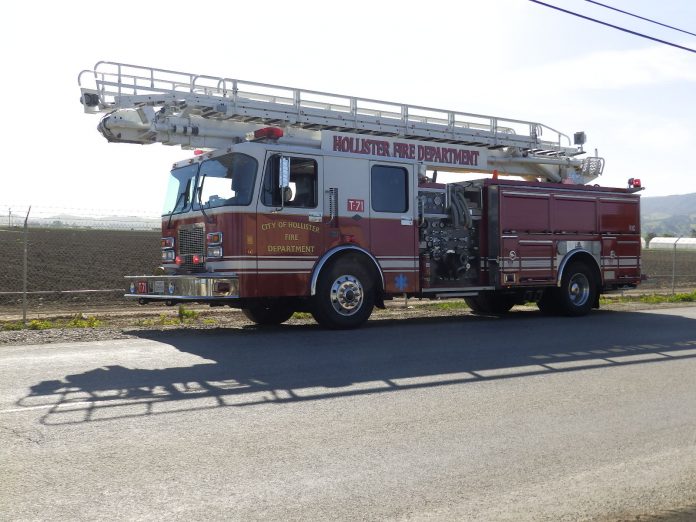
County supervisors revived talks Tuesday on the possibility that local governments could send out bills to offset costs of emergency responses.
Supervisors discussed the item and indicated they will take it up for further consideration at a future date. The tense talk came three months after Hollister council members voted 3-2 to table the consideration following public backlash against the idea, which could result in the city sending out bills totaling thousands of dollars for itemized costs associated with responses.
The county and San Juan Bautista contract with the City of Hollister for fire services. Supervisor Jerry Muenzer, for one, said he would need to see support from all three agencies to move ahead on a cost-recovery fee schedule as a way to deal with the county’s continued budget shortfalls.
“I think all the agencies need to be on board,” Muenzer said.
The idea involves an assessment of each response to see whether there is negligence involved and then, if so, a calculation of associated costs as shown in a list under consideration by the city. Officials contend they will primarily go after insurance companies.
While supervisors Tuesday expressed mixed views on the idea—Supervisor Robert Rivas said he would never support such a plan—residents who spoke during public comment slammed the proposal.
Resident Marvin Jones contended insurance premiums in the area would increase. He had a stern warning on the potential fallout from a practical perspective as well.
“People might quit calling for aid,” Jones said. “They just go ahead and die so they don’t get a bill from San Benito County for cost recovery for things they’re paying taxes for. Bad, bad, bad! If you can’t manage the money that you have, you’re doing a poor job.”
Resident Marty Richman called the idea “baloney.”
“We don’t pay taxes so the fire department can live in the fire house and enjoy their meals and sleep there,” Richman said. “We pay so they will respond to the fires. That’s what we pay them for.”
Richman said there is a big difference between gross negligence—offering examples such as a drunken-driving wreck or someone storing 50 pounds of black powder in a garage—and a routine accident that could involve some level of negligence. He warned that the policy could potentially affect a wider swath of the population than portrayed by some officials.
“I’ll bet you there isn’t a garage in this entire county that doesn’t have some paint remover stored in it,” he said.
Richman also said he had made contact with his insurance carrier—a large company—and was told the firm does not pay those bills. A representative for the company that could oversee local collections for a cut of the revenue, along with some officials, have repeatedly claimed that the policy would target insurance companies to pay the fees.
With an approval from Hollister’s council, the city would hire the consultant—the city has been in talks with Fire Recovery USA, which had a representative speak at Tuesday’s county meeting—to manage the billing and take a 20 percent cut from the new revenue source. City Manager Bill Avera has said the new funds would go toward fire department equipment purchases.
Neither the county nor Bridgette Bugby, an account manager for Fire Recovery USA who pitched the idea to supervisors Tuesday, mentioned anything about the 20 percent cut during the presentation. Bugby pointed out that the company has agreements with 89 jurisdictions for response-fee collections including Aromas fire, which has collected $15,000 on 29 claims, she said.
“We’re just basically the hard workers on the back end, working and fighting the insurance company for the payment,” Bugby said.
The reviews from supervisors weren’t quite as glowing.
“It really is challenging my understanding of why we’re here as a government,” Rivas said.
Rivas said residents have an expectation that the county will provide certain services, particularly for public safety.
“We are here to provide these services to our citizens,” he said.
Supervisor Jaime De La Cruz referred to the idea as a “slippery slope.” Supervisors Margie Barrios and Anthony Botelho both indicated they would like more information before taking a side but didn’t rule out an eventual approval.
“I certainly do have mixed feelings on it myself,” Botelho said.
The proposed fees presented in the spring to city officials were broken down by such response categories as motor vehicle incidents, hazardous materials, false alarms, fire investigations, fires, water incidents and the fire chief’s involvement.
The most common “billing level” expected would be for a hazardous materials assessment at motor vehicle accidents, with a “Level 1” cost of $435 up to a “Level 5” response involving a helicopter, with a charge of $2,200.









